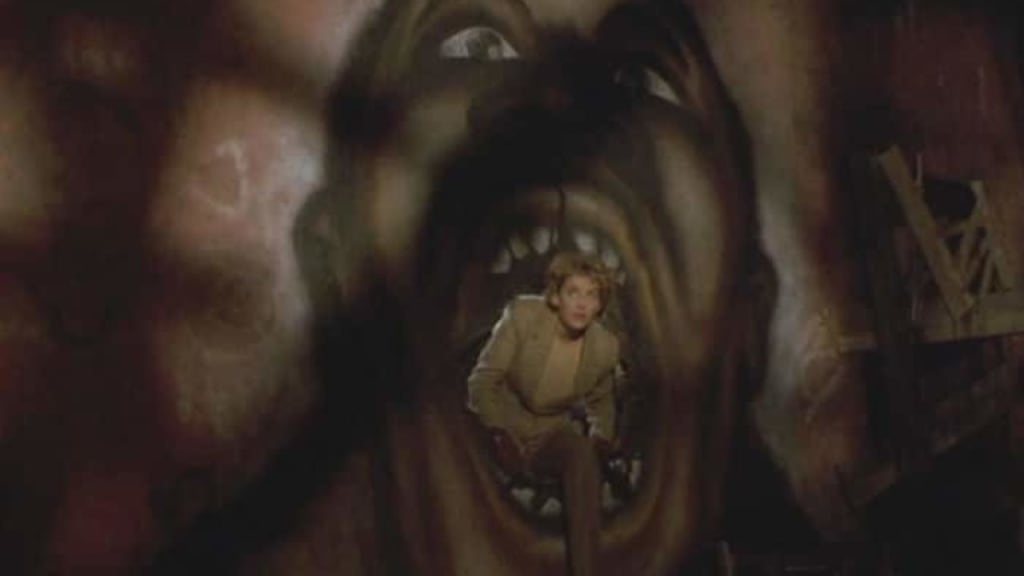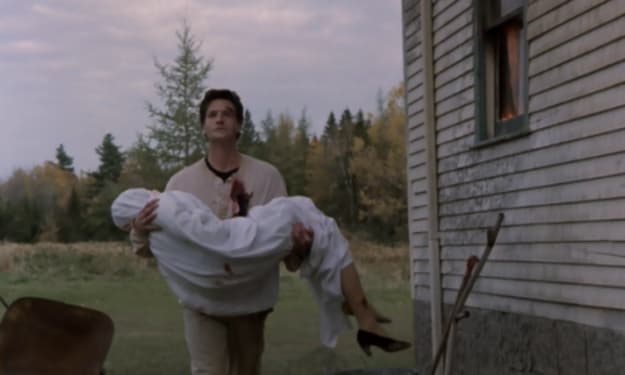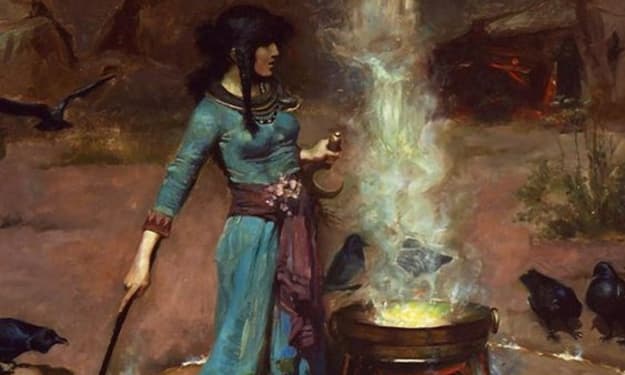Candyman and The Horror of Inner-City America
Slasher Classic

There is one film that continues to haunt me. I not only watch it during October but at any time of the year. Maybe because I am also a horror maestro, and the film does not require the holiday of Halloween to enjoy and get the full effect, unlike the Halloween franchise per se'. Candyman, directed by Bernard Rose, starring Virginia Madsen and Tony Todd as our titular monster. I was aware of this film since 1992, seeing print ads, and being aware of the concept of a black movie monster with a hook for a hand. However, I never came to view until later in my college years.
Candyman is an adaption of Clive Barker's short story, The Forbidden. The film follows Helen Lyle, a college graduate student in Chicago, who is researching the urban legend of Candyman. This legend centers on a monster with a hook for a hand who will appear and kill you if you dare say his name five times in the mirror. The basis of this story comes from the old housing projects of Cabrini Green in Chicago. What starts as a simple academic research paper becomes a horrific journey and a thorough look into the racial history of America.
Candyman, himself was once a painter in post-Civil War America. A wealthy man hires him to paint his daughter, only to engage in forbidden love with her. Afterward, she became pregnant, and her angry, racist father strikes back. A mob saws off his right hand and smears his body in honey, prompting a brutal swarm of bees to sting him to death. Unlike more contemporary mainstream movie monsters like Michael Myers or Freddy Krueger, Candyman is a rather tragic monster. He harkens back to the likes of Frankenstein or Dracula. He is also not silent, but not the talkative quipper either. Our monster here is well-spoken, even emotional, as you see tears run down his cheeks in some scenes.
What keeps me coming back to this film is how it is far beyond some run-of-the-mill slasher flick, no offense. What Candyman does through horror is to provide a commentary on race in America. The myth of Candyman is born of racism. We see him stalk this lovely white woman, imagery steeped in old Birth of The Nation ideas of black men. The film takes place in the old Cabrini Green housing projects of Chicago. This block was a pre-dominant, black inner-city community. Cabrini Green has little to no upkeep, graffiti, trash, and much more if you read up on it. Yet, we see Helen's condo, where she speaks of how her condo building was public housing until last-minute changes. With few decorative changes and catering to a white market, the building simply changed from public housing to condos. We see this still to this day! Not only public housing, but most predominantly black communities have little to no upkeep and lesser real estate value.
We see when Helen investigates the murder of Ruthie Jean, a single black woman living in Cabrini Green, the dichotomy of justice when it comes to race. Many believe Candyman killed Ruthie Jean, except for Helen. Unfortunately, Ruthie Jean's killer is never found, no charges are pressed towards anyone, the investigation, if there ever was one, is left closed and unsolved. Yet, when Helen is attacked by a black male claiming to be Candyman in a public bathroom, the police waste no time. The police do what they call a 'sweep' in which they work from the top-down of the complex. The premise here is they are flushing out the filth and vermin. You start with a few at the top you get the rest as they purge. Think about this all for a moment.
Both the film and our protagonist, Helen, are aware of this injustice in the American justice system. After she identifies the attacker and lives to see another day, meeting her friend, she says, “Yeah, but you know what bugs me? Two people get murdered. The cops do nothing. A white woman gets attacked, and they lock the place down.” You can see numerous cases like this to this day. Keep in mind this film came out in 1992, and in 2020 we have a case like Breonna Taylor for example. Nothing changes.
Until she finally meets Candyman, Helen believes that the entire community of Cabrini Green is blaming this urban legend for their woes. This is not any different from blaming the victims for all of their problems in similar scenarios. One views these as individuals with individual problems, or collectivist thought of just pinning an entire community in negativity. Instead, they should understand the structural problems here. Cabrini Green and its counterparts are designed to fail.
Lastly, I cannot help but worry about the ending of the community in Cabrini Green. Helen Lyle is caught in their bonfire, rescuing an infant. She makes it out, the child safe, but she dies shortly afterward. What does this do to Cabrini Green? The death of a young, attractive, college-educated white woman is bound to drive down the real estate value of this area. This story will add more fuel to the fire of telling white people not to journey to 'that side of town.' Imagine the stories one may hear - don't go to Cabrini Green, they burn white people alive!
Candyman may not be a true slasher film, although it does borrow the violence and gore, unlike other traditional horror films. Composer Phillip Glass even mistook it for a slasher. It is terrifying how far we have not come from slavery in America. Candyman is the tragic, ghostly representation of America's racist past, that continues to haunt us.
About the Creator
Skyler
Full-time worker, history student and an avid comic book nerd.
Enjoyed the story? Support the Creator.
Subscribe for free to receive all their stories in your feed. You could also pledge your support or give them a one-off tip, letting them know you appreciate their work.






Comments
There are no comments for this story
Be the first to respond and start the conversation.